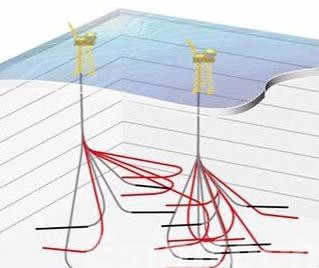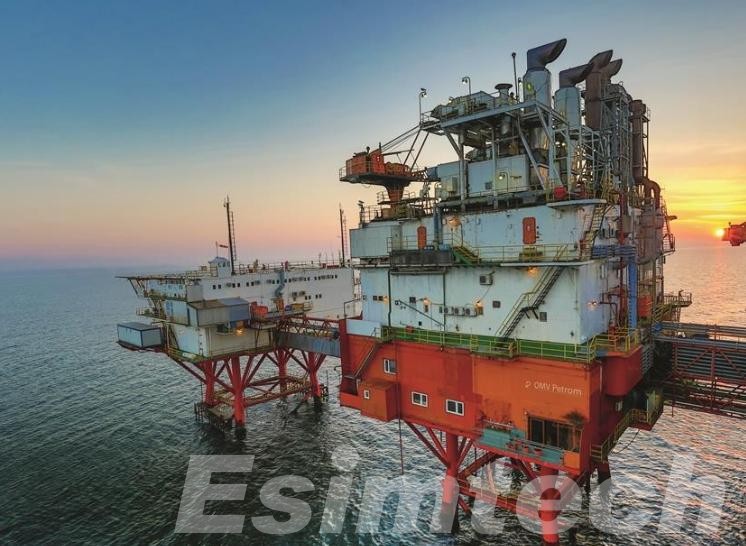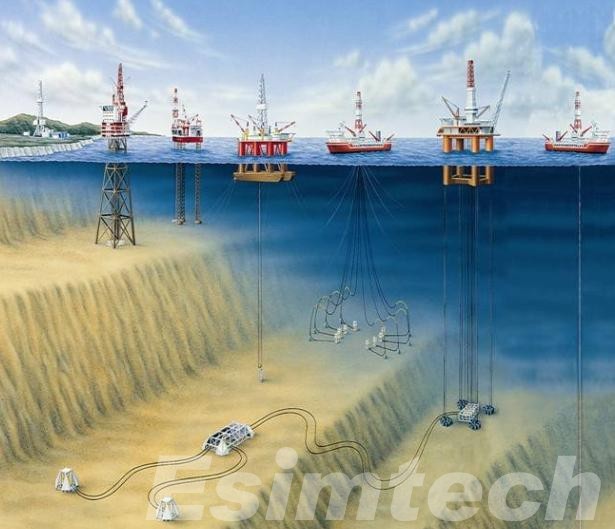Advantages of Multilateral Drilling in Offshore Fields
With the increasing global demand for oil and gas, efficient methods of extraction are essential for meeting energy needs while balancing environmental and economic concerns. Offshore fields, often complex and costly to develop, require innovative drilling techniques to optimize resource recovery.
Multilateral drilling, which involves creating multiple wellbores branching from a single main borehole, has emerged as a highly effective approach. This article explores the advantages of multilateral drilling in offshore fields, focusing on its operational efficiency, cost-effectiveness, and environmental benefits.
What is Multilateral Drilling

Multilateral drilling is a technique in which several well branches, known as laterals, are drilled from a single main borehole. This approach enables operators to reach multiple reservoir zones from one well, eliminating the need for separate wells for each zone. Typically, multilateral drilling involves multiple junctions that connect each lateral back to the main borehole. These junctions can range in complexity, from straightforward designs to advanced systems that allow independent flow control for each branch.
Advancements in drilling tools and methods have made it possible to implement multilateral drilling effectively in offshore fields. Using precise directional drilling, engineers can guide equipment to create complex well structures. This strategy enables access to hard-to-reach reservoirs, maximizing the well’s extraction potential while reducing the need for additional infrastructure.
Why Use Multilateral Drilling in Offshore Fields?
Offshore fields pose distinct challenges, including high costs, complex logistics, and strict environmental considerations. Multilateral drilling provides strategic advantages that address these issues, allowing for more efficient and sustainable operations. Here’s an in-depth look at the four most important benefits:
Significant Cost Savings
Offshore drilling is capital-intensive, with infrastructure costs driving up expenses. Multilateral drilling reduces these costs in several ways:
- Reduced Need for Multiple Wells: By accessing multiple reservoir zones from a single main well, multilateral drilling minimizes the number of boreholes needed, which reduces drilling time and material costs.
- Lower Rig Time Requirements: Fewer wells mean less time spent on rig operations, which is particularly valuable offshore where rig costs are high.
- Minimized Infrastructure: Each new wellhead, riser, and additional production equipment adds considerable expense. Multilateral setups reduce these needs, further lowering upfront and long-term maintenance costs.
Altogether, these factors result in significant cost savings, making multilateral drilling a cost-effective choice for offshore fields.
Enhanced Reservoir Contact and Recovery Rates
Offshore reservoirs are often composed of multiple zones with varying depths, pressures, and levels of oil or gas saturation. Conventional wells access only one of these zones, limiting their potential recovery. In contrast, multilateral drilling enables operators to reach multiple zones from a single borehole, thus maximizing reservoir contact:
- Increased Reservoir Access: Each lateral branch in a multilateral well can target a different reservoir zone, ensuring more extensive contact with the hydrocarbon resource. This access allows operators to reach zones that would otherwise remain untapped or underutilized.
- High-Yield Zone Targeting: By focusing on zones with higher oil or gas saturation, operators can increase the productivity of each well. Multilateral branches can be directed specifically toward areas of higher yield, which optimizes hydrocarbon output without additional infrastructure.
- Improved Recovery in Complex or Declining Fields: Mature or complex reservoirs often contain isolated pockets of oil and gas that conventional wells cannot easily reach. Multilateral wells, with their branched structure, can access these pockets, enhancing total field recovery and extending the productive life of offshore fields.
- Reduced Water and Gas Coning Risks: By selectively targeting specific zones and carefully managing the flow from each lateral, operators can minimize issues such as water or gas coning, which can interfere with production efficiency and reduce well longevity.
This maximized reservoir contact not only increases the resource yield per well but also provides a strategic advantage in offshore projects where every well drilled represents a significant investment.

Reduced Environmental Footprint
Environmental sustainability is a critical issue in offshore drilling, primarily due to its potential effects on delicate marine ecosystems. Multilateral drilling, which combines multiple reservoir targets into a single well, significantly minimizes the environmental impact of offshore operations:
- Reduced Seabed Disturbance: Each additional well contributes to seabed disruption, negatively affecting marine habitats. By drilling fewer wells, the physical disturbance is minimized, aiding in the preservation of underwater ecosystems and biodiversity.
- Lower Greenhouse Gas Emissions: Fewer wells necessitate less energy for drilling and maintenance, which translates to reduced fuel consumption and lower greenhouse gas emissions. This reduction supports industry and regulatory initiatives aimed at decreasing carbon emissions in offshore operations.
- Decreased Risk of Oil Spills and Leaks: Each well and its infrastructure pose a risk of oil spills and leaks. Consolidating production into fewer wells through multilateral drilling diminishes these risks, thereby protecting the marine environment and minimizing the potential costs of cleanup efforts.
- Easier Compliance with Environmental Regulations: As global emphasis on environmental responsibility grows, regulatory bodies are implementing stricter standards for offshore drilling. The lower environmental impact of multilateral drilling facilitates compliance with these regulations, promoting more sustainable practices in the industry.
By addressing these environmental challenges, multilateral drilling enables companies to conduct offshore operations responsibly, striking a balance between resource extraction and environmental conservation.
Improved Production Management and Flexibility
Multilateral drilling offers a significant advantage through the ability to control production from multiple reservoir zones independently, allowing operators to optimize output based on field conditions and market demands.
- Independent Flow Control: Each lateral can be managed separately, enabling operators to adjust flow rates and pressure without affecting other branches. This targeted control enhances production efficiency for each reservoir zone.
- Dynamic Production Strategies: Operators can prioritize high-yield zones and delay extraction from less productive areas, maximizing revenue by adapting to resource availability and market conditions.
- Prolonged Well Life: Independent control helps address issues like water or gas breakthrough. If one lateral faces challenges, production can be shifted to another, maintaining overall output.
- Market Responsiveness: Multilateral wells allow for quick adjustments in production based on economic shifts, giving companies a competitive edge by enabling rapid scaling up or down without additional drilling.
Overall, the flexibility and control offered by multilateral drilling are crucial for successful offshore operations, enabling operators to navigate complex reservoirs and fluctuating market dynamics effectively.
Multilateral Drilling vs. Conventional Drilling

When comparing multilateral drilling to conventional drilling, several key differences highlight the advantages of multilateral approaches, particularly in the context of offshore operations. Understanding these distinctions can clarify why multilateral drilling has gained traction in the industry:
| Aspect | Conventional Drilling | Multilateral Drilling |
| Well Design and Structure | Single vertical or directional wellbore for one zone. | Multiple laterals from a single main borehole, accessing multiple zones. |
| Infrastructure Requirements | Requires separate infrastructure for each well (wellheads, risers). | Reduces infrastructure needs by consolidating multiple reservoirs into one well. |
| Reservoir Access | Limited to one reservoir zone per well, potentially leaving productive zones untapped. | Maximizes reservoir contact by accessing multiple zones, enhancing recovery potential. |
| Environmental Impact | Increases environmental disturbance and risk of spills with each new well. | Minimizes seabed disturbance and spill risk due to fewer wells, promoting sustainability. |
| Production Management | Limited to managing production from one zone at a time, complicating strategy. | Allows independent management of each lateral, providing flexibility in production strategies. |
| Operational Efficiency | More complex operations due to multiple wells and infrastructure. | Streamlined operations with reduced maintenance and logistical needs. |
| Cost Efficiency | Higher costs due to drilling multiple wells and extensive infrastructure. | Cost-effective by reducing drilling and operational expenses through fewer wells. |
Summary
Multilateral drilling is a preferred method in offshore oil and gas operations, offering key advantages over conventional drilling. By allowing multiple laterals from a single well, it enhances resource recovery and reduces costs through less infrastructure and rig time.
Key benefits include improved access to multiple reservoir zones, higher recovery rates, and a smaller environmental footprint with fewer wells and lower spill risks. Additionally, it provides greater flexibility in production management, enabling operators to adapt to changing conditions effectively. Overall, multilateral drilling maximizes efficiency while minimizing costs and environmental impacts.
